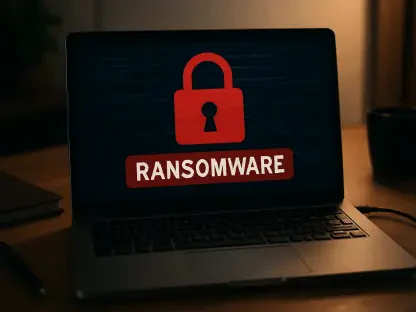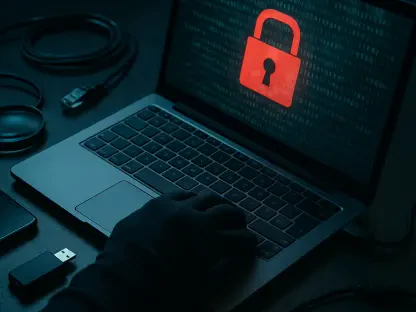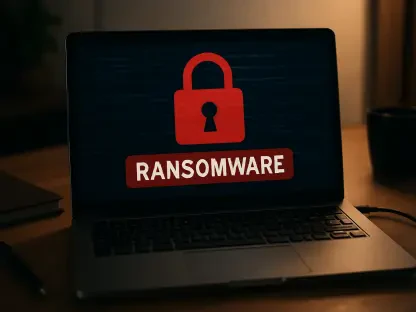The cybersecurity sector is currently grappling with a troubling trend where scammers use AI-driven deepfakes to pose as job applicants. Dawid Moczadło, co-founder and security engineer at Vidoc Security Lab, nearly fell victim to sophisticated deepfake candidates on two occasions within a span of just two months. These fraudulent attempts appear to be aimed at securing positions in companies developing AI technologies, ultimately to steal sensitive intellectual property or source code. Moczadło’s experiences provide valuable insights into the specific nature of these schemes and the broader implications for the tech industry as a whole.
The Rise of AI-Driven Deepfake Job Applicants
Moczadło’s First Encounter with a Deepfake Applicant
In December, Moczadło had an unsettling experience when he interviewed a supposed software developer who had successfully passed the initial rounds of vetting. However, during a video call, it became apparent that the applicant was using real-time software to alter his appearance. Although the candidate rigorously answered all questions accurately, several red flags were raised—he claimed to reside in Poland, applied through a Polish job site, and had a Polish name but spoke with a strong Asian accent during phone interactions. The video interview revealed additional inconsistencies: the applicant’s camera was glitchy, and his movements appeared unnatural, which led Moczadło to conclude that the individual was not genuine.
The entire interview process, which lasted over five exhausting hours, ultimately led to the discovery of the scam. Despite recognizing the candidate’s proficiency and competency in answering technical questions, the visual and behavioral inconsistencies exposed the fraudulent nature of the applicant. This incident highlighted the sophistication of scammers who use AI technology to manipulate their appearance, making it increasingly challenging to detect impostors during the hiring process.
The Second Encounter: A Pattern Emerges
A few months later, Moczadło encountered another deepfake candidate, this time through LinkedIn. The individual, who went by the name Bratislav, claimed to be a Serbian software engineer seeking a remote role. His LinkedIn profile appeared legitimate, boasting approximately 500 connections, nine years of experience, and a computer science degree from a Serbian university. However, similar discrepancies surfaced when the Serbian candidate spoke with a pronounced Asian accent, sparking suspicion once again.
During preliminary interviews, Bratislav cited a malfunctioning camera as the reason he could not participate in on-camera interviews. When he finally agreed to an on-camera session, the telltale signs of a deepfake became evident. Visual disparities, such as the misalignment between the candidate’s head movements and his neck and his reluctance to comply with simple requests to move his hand in front of his face, substantiated Moczadło’s suspicions. Additionally, the candidate’s responses resembled ChatGPT-generated text, presenting structured bullet-point answers with delayed delivery, lending credence to the belief that they were being read from AI-generated content.
Broader Implications for the Tech Industry
The Threat of Organized Scams
These incidents are not isolated but reflect a broader, emerging trend of organized scams, often involving North Korean entities, aimed at infiltrating tech companies. According to the U.S. Department of Justice, North Korean tech scams have accumulated around $88 million over six years. These operations typically involve individuals masquerading as legitimate Western technology workers to secure remote positions, channeling their earnings to North Korea and potentially stealing sensitive information for exploitation or blackmail.
This modus operandi, in which fake IT workers exploit technological vulnerabilities, presents a multifaceted threat to companies. For instance, North Korean operatives could siphon off not only financial assets but also intellectual property critical to a company’s competitive edge. They might extort companies by threatening to reveal valuable internal information, thereby posing severe risks to businesses and their operations.
The Evolution of Deepfake Technology
Moczadło’s encounters underscore the rapid evolution of deepfake technology and its increasingly sophisticated applications in cybercrime. He has expressed concerns about the growing difficulty in distinguishing genuine individuals from artificial impostors as AI technology continues to advance. Detecting AI-generated responses currently relies on noticeable visual glitches and recognizing structured, AI-written text. Still, as technology refines, these distinguishing factors might soon become indiscernible.
This challenge extends beyond just video interview scenarios, having broader security implications for any remote or digitally facilitated interaction. The increasing use of AI to create hyper-realistic digital personas signifies a pressing need for robust verification processes and heightened awareness among recruiters and security professionals to prevent potential breaches. With technology progressing at an unprecedented rate, the ability of scammers to create convincing deepfake personas will only become more sophisticated, requiring equally advanced countermeasures.
Industry Response and Future Measures
Collaborative Efforts in Cybersecurity
In response to these alarming trends, Moczadło has actively shared his experiences with other cybersecurity researchers. By providing video recordings and documentation, he aims to help attribute these fraudulent activities to specific criminal organizations or nation-states. This collaborative effort is crucial for developing countermeasures and equipping the industry to combat such sophisticated threats effectively.
The overarching consensus within the cybersecurity community underscores the urgent need for vigilance and advanced detection mechanisms to fight the rising threat of AI-driven fraud. Industry experts acknowledge the dangers posed by these technological advancements and stress the importance of continuous innovation in security protocols to identify and thwart such attacks proactively.
Enhancing Verification Processes
The increasing use of AI to create hyper-realistic digital personas necessitates a comprehensive reevaluation of current verification processes. Recruitment and security professionals must implement more robust and innovative measures to counteract this growing threat. This may entail adopting multi-factor authentication, employing sophisticated AI detection tools, and continuously updating security protocols to keep pace with technological advancements.
Furthermore, ongoing training and awareness programs for recruiters and HR personnel will be essential in recognizing the telltale signs of deepfake applicants. By equipping staff with the knowledge and tools to identify potential fraud, organizations can bolster their defenses against these sophisticated scams. The insights gained from Moczadło’s experiences serve as a crucial reminder of the vulnerabilities within current recruitment processes and highlight the necessity for continuous adaptation and fortification of cybersecurity measures.
The Path Forward
The cybersecurity industry is currently facing a concerning issue where scammers are using AI-powered deepfakes to impersonate job applicants. Dawid Moczadło, co-founder and security engineer at Vidoc Security Lab, almost got duped by sophisticated deepfake candidates twice in just two months. These fraudulent attempts seem to target positions in companies that develop AI technologies, with the likely objective of stealing sensitive intellectual property or source code. Moczadło’s encounters offer crucial insights into the specific nature of these deceptions and their wider repercussions for the tech sector overall. Deepfakes represent a new and more deceptive method of fraud, and they can be hard to detect without advanced tools. As deepfake technology becomes more sophisticated, the risk of these types of scams increases, potentially leading to significant breaches of company security and loss of intellectual property. The tech industry must stay vigilant and develop robust ways to authenticate candidates to protect against this evolving threat.









